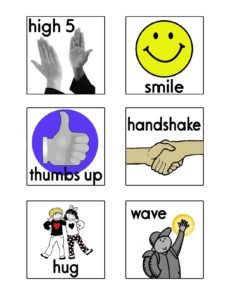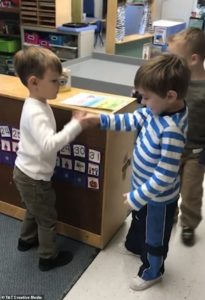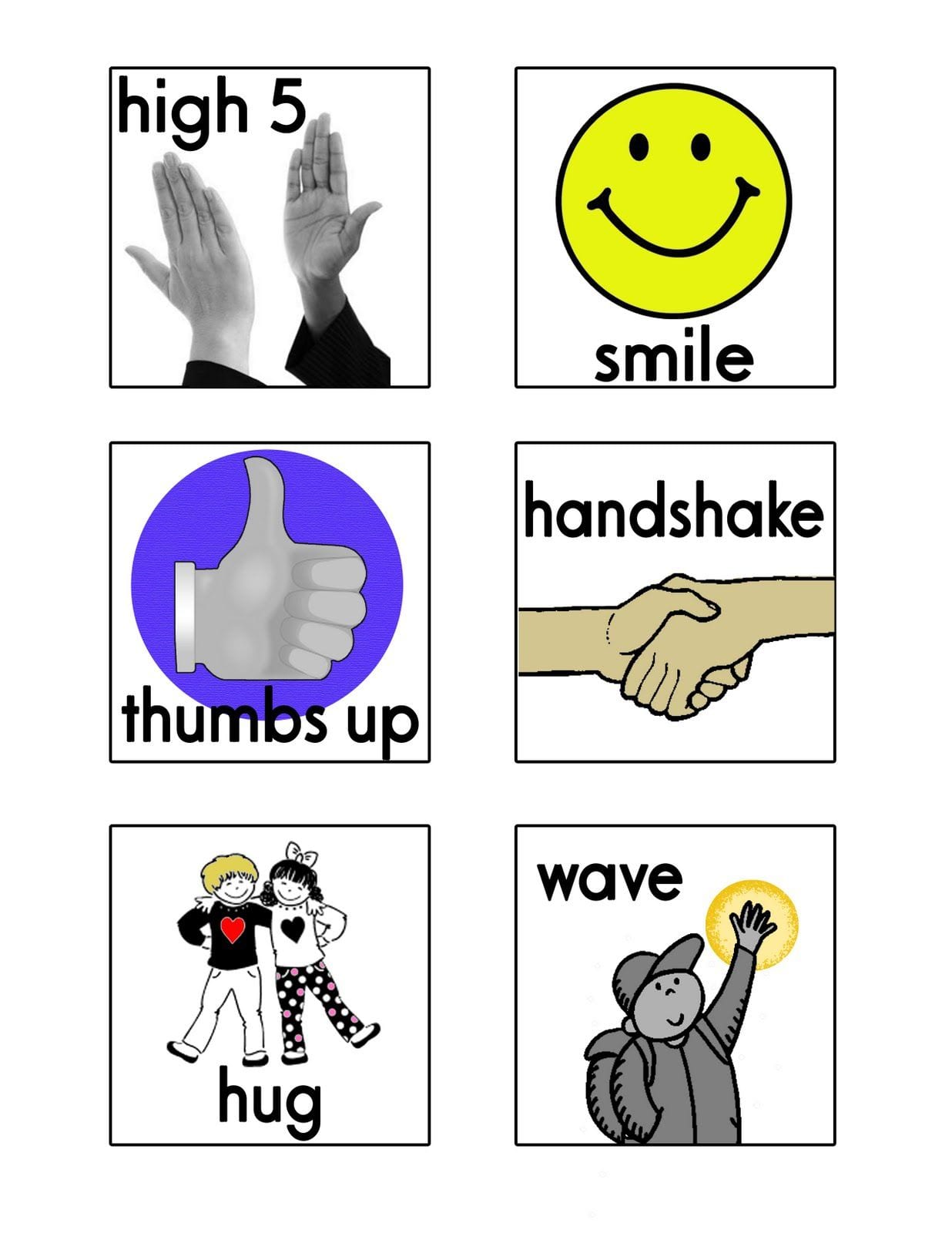Student Contributor: H. Stinger
 This greeting tool is a great way for kids to start off their morning and for the teacher to be able to read how the child is feeling that day. In short, it’s a board that is posted outside the classroom where the individual student gets to pick how the teacher greets them that day before entering the classroom. Some of the options can include fist bump, hug, mini dance party, high five, handshake, or any other options the teacher sees fit.
This greeting tool is a great way for kids to start off their morning and for the teacher to be able to read how the child is feeling that day. In short, it’s a board that is posted outside the classroom where the individual student gets to pick how the teacher greets them that day before entering the classroom. Some of the options can include fist bump, hug, mini dance party, high five, handshake, or any other options the teacher sees fit.
This tool looks like a board posted outside the classroom with boxes containing different types of greetings to start the day where students point to a greeting before entering the classroom. Each word typically has a picture to illustrate what the greeting looks like. For example, if one of the boxes says “hug,” the picture could have two stick figures hugging. There are typically about 4-5 options to choose from and some popular options are a hug, mini dance party, high five, fist bump, or other options. Based on what the child points to, the teacher is able to learn things such as how that student is feeling today or if they liked to be touched. A student could come in that normally does a quick fist bump could one day pick a hug instead. This can be a signal for the teacher that maybe that child had something happen and just needs some extra love that day. The teacher can also rotate letting the students lead this activity as well. (illustrated in video).
 This is an example of the preventative phase. It’s preventative because having that fun morning greeting really sets the tone and atmosphere for the rest of the day. This activity takes place before learning happens and is meant to really create not only student to teacher bonds, but student to student bonds as well. Overall, this is mainly a student-directed theory because the students get to decide how they want to be greeted and students having the choices is the main idea of student-directed classrooms. If a student only wants a simple wave going into class, that is totally up to the individual. Students can make it more collaborative student-directed to begin with by maybe having the students pick the possible morning greeting actions while the teacher has the overall say if the completed greeting board is okay.
This is an example of the preventative phase. It’s preventative because having that fun morning greeting really sets the tone and atmosphere for the rest of the day. This activity takes place before learning happens and is meant to really create not only student to teacher bonds, but student to student bonds as well. Overall, this is mainly a student-directed theory because the students get to decide how they want to be greeted and students having the choices is the main idea of student-directed classrooms. If a student only wants a simple wave going into class, that is totally up to the individual. Students can make it more collaborative student-directed to begin with by maybe having the students pick the possible morning greeting actions while the teacher has the overall say if the completed greeting board is okay.
More Information –
Tool Source: Facebook/Internet



Hi,
I love this concept. I think it is empowering.
I am part of a Victim support group and I think there is more to this tool than just setting the tone or giving a child a choice.
I would love to know if the teachers has notices that certain types of children have a preference to greet in a certain manner and does this then change when something is wrong. Has this kind of data been captured?